{{ this.results.length }} Results
Your search for {{ this.pattern }} didn't return any results.
Dracaena Care Guide

Dracaenas, including the Dragon Tree, Dracaena Compacta, and Dracaena Lisa to name a few, are timeless indoor houseplants, admired for their striking shapes and easy-going attitude. Also known for their air-purifying qualities, Dracaenas are an ideal choice for both novice and seasoned plant enthusiasts. Whether you prefer a bold, sculptural look or a lush, tropical feel, there’s a Dracaena to suit your style. Discover how to grow and care for these elegant, low-maintenance plants.
Simple Care Instructions for the Dracaena
Light Requirements
Dracaena plants thrive in bright, indirect light but are highly adaptable and can tolerate lower light conditions. While some varieties, like Dragon Tree and Dracaena Lisa, can handle lower light, others, like Dracaena Compacta, will do better with medium to bright light. Avoid direct sunlight, as it can scorch the leaves.
Watering Needs
Dracaena plants prefer moderate watering, meaning you should let the top 1–2 inches of soil dry out before watering again. Overwatering is a common issue and can lead to root rot, so it's best to err on the side of underwatering. Most Dracaena varieties only need watering about once every 1–2 weeks depending on the temperature and humidity.
Need some watering support? Use a moisture meter to always know the best time to water your Dracaena. Shop our favorite minimalist moisture meter here.
Humidity and Temperature
Dracaena plants thrive in average indoor humidity but appreciate a bit of extra moisture in the air. While they can tolerate drier conditions, regular misting or placing them near a humidifier can help prevent leaf browning, especially in winter when indoor air can be dry.
For temperature, Dracaenas prefer a range of 65–80°F (18–27°C) and should be kept away from cold drafts, air conditioning vents, and sudden temperature drops. Avoid exposing them to temperatures below 50°F (10°C), as cold stress can cause leaf damage.
Soil and Fertilizing
Dracaena plants grow best in well-draining, loose soil that retains some moisture but doesn’t stay soggy. A high-quality potting mix with added perlite or sand for aeration works well. Avoid heavy soils that hold too much water, as this can lead to root rot.
Dracaenas benefit from a balanced liquid fertilizer, though they can be prone to fertilizer burn (damaged foliage due to too much fertilizer, for example in the leaves' tips) so apply no more than instructions indicate during the spring and summer. In fall and winter, when growth slows, you can reduce or pause fertilizing.
Common Problems and Troubleshooting Tips
Brown Tips – Underwatering
Symptoms: Tips or edges of leaves turning brown and crispy.
Cause: While there are many potential causes for brown tips, sometimes plants that have been too dry for too long will develop them.
Solution: Give your plant a deep drink of water. Then, if you'd like, you may trim the brown tips off following the natural shape of the leaves. Regularly water your plant when the top few inches of the soil feels dry.
Brown Tips – Tap Water
Symptoms: Tips or edges of leaves turning brown and crispy.
Cause: Dracaenas are sensitive to chemicals in tap water, which can accumulate in the soil and cause brown leaf tips. While this is not incredibly common, it is possible depending on where you live.
Solution: If you'd like, you may trim the brown tips off following the natural shape of the leaves. Try using filtered, distilled, or rainwater. You can also try letting water sit out for 24 hours before using it to water your plant, as this gives the chemicals time to evaporate.
Brown Tips – Too Much Fertilizer
Symptoms: Tips or edges of leaves turning brown and crispy.
Cause: Too much fertilizer or a buildup of salts in the soil can damage the roots and result in brown tips.
Solution: If you'd like, you may trim the brown tips off following the natural shape of the leaves. Flush the soil of your plant with water to remove excess salts.
Leaf Drop In Dragon Trees
Symptoms: Leaves falling to the floor.
Cause: Usually, nothing!
Solution: Leaf drop is common with Dragon Trees--this plant regularly sheds its leaves as it grows new ones. If you'd like to avoid having leaves on your floor, once a twice or month you may gently remove the dried leaves on your plant. You will see--it is quite satisfying!
Leaves Drooping - Watering
Symptoms: Leaves heavily drooping.
Cause: Underwatering or overwatering.
Solution: If your Dracaena shows drooping leaves, most likely it either needs a good drink of water, or a break from too much water. Check the soil and determine if your plant may be over or underwatered.
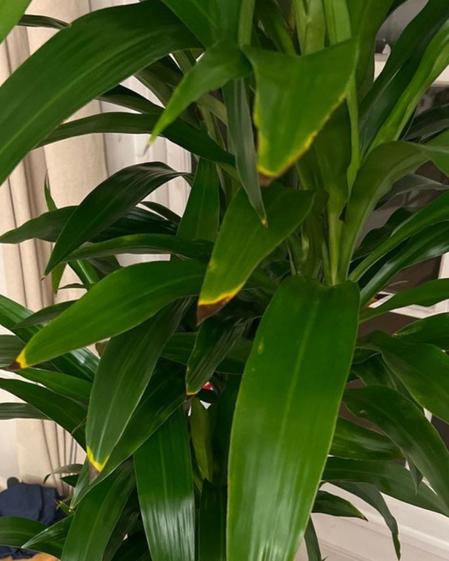
Brown tips on a Dracaena Lisa are common, possibly due to chemicals in water
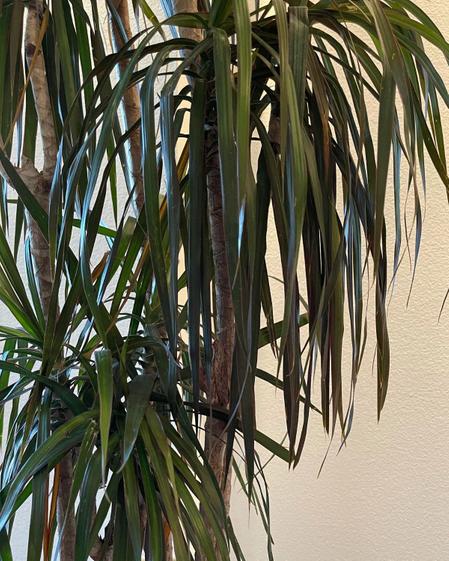
Droopy Dragon Tree, most likely a watering imbalance
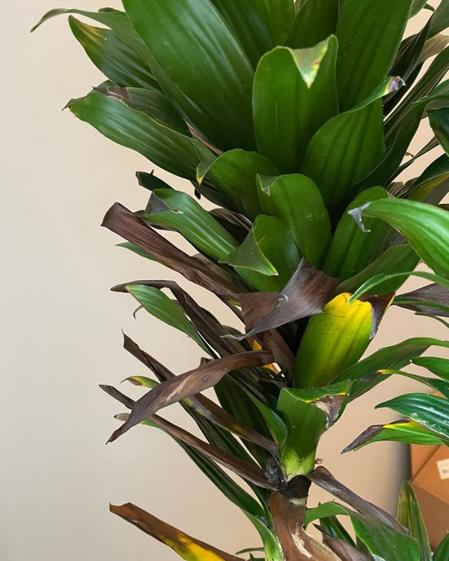
Brown tips are a common issue with the Dracaena Compacta
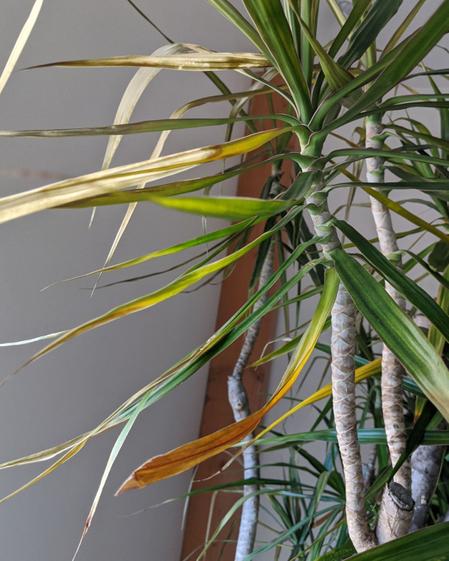
Brown leaves and leaf drop on a Dragon Tree, possibly a watering issue
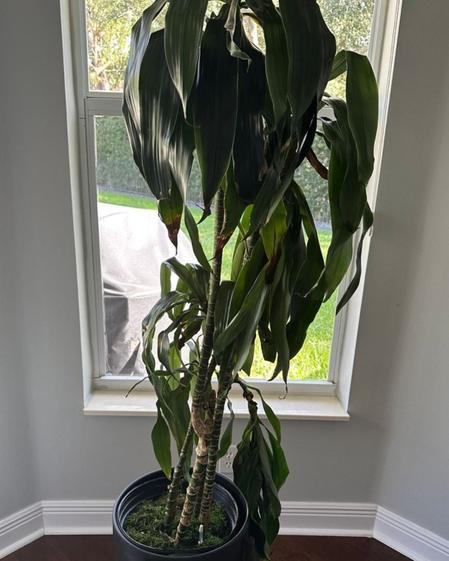
Droopy Dracaena Lisa, most likely underwatered
Seasonal Care Tips
Dracaenas are slow growers. Be patient and yours will reward you!
Dracaena Plant Varieties
Dracaenas are a diverse group of tropical plants prized for their striking foliage, air-purifying qualities, and easy care. While there are many species within the Dracaena genus (over 200!), here are a few of the more well-known and widely grown varieties:
Dragon Tree (Dracaena Marginata)
One of the most recognizable Dracaena varieties, the Dragon Tree is known for its dramatic, spiky appearance and long, narrow leaves with red, burgundy, or purple edges. Dragon Tree care is very simple, and this plant is a great option for beginners.
Dracaena Lisa
A classic indoor plant with broad, tropical leaves and a sturdy, cane-like structure, the Dracaena Lisa does particularly well in low light areas and is possibly one of the easiest plants to care for within the Dracaena family.
Dracaena Compacta (Dracaena Fragrans ‘Janet Craig’)
An ideal Dracaena variety for small or narrow spaces, the Dracaena Compacta is indeed a more compact version of its counterparts. Dracaena Compactas are easy to care for and require minimal maintenance over time.